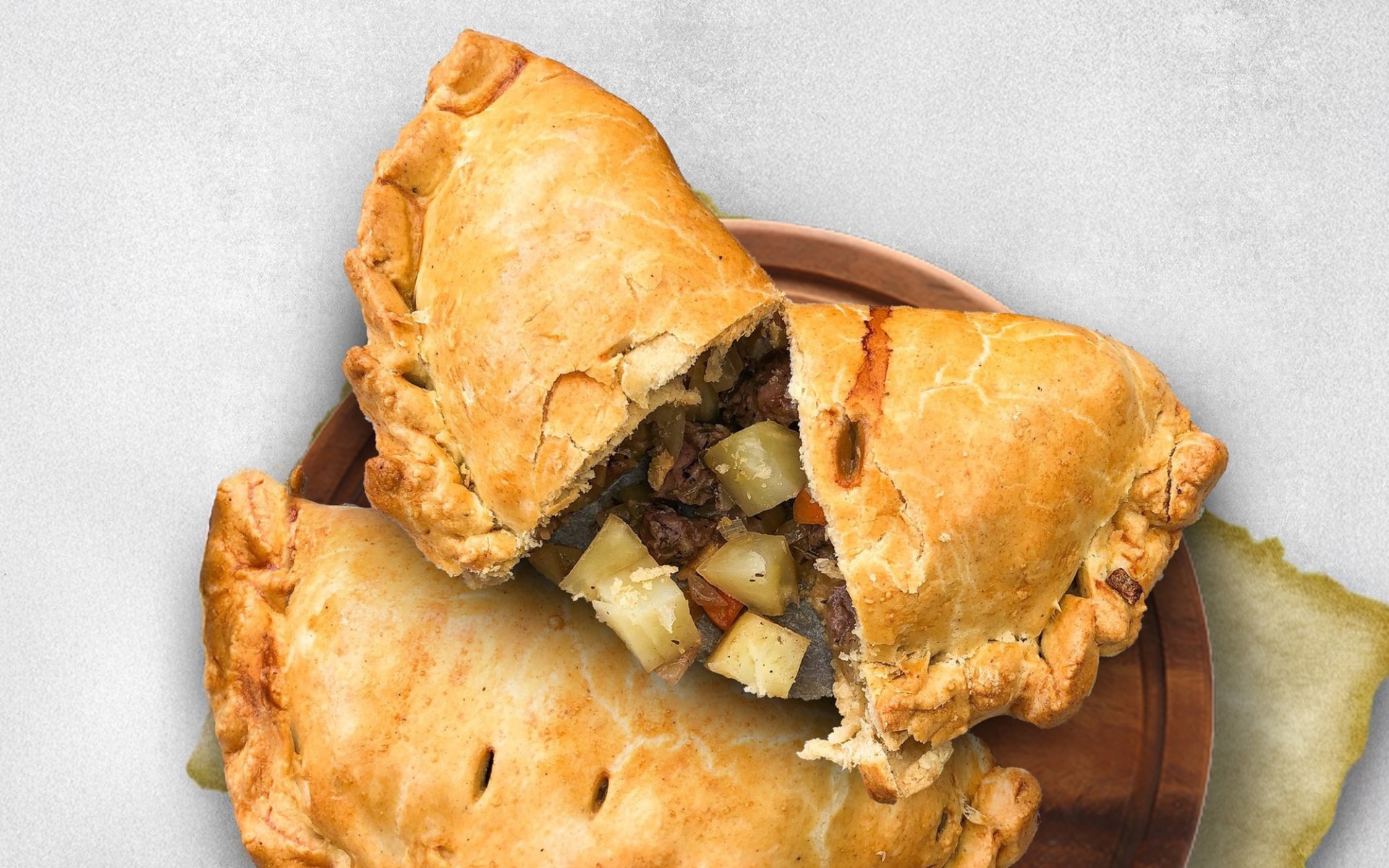Cornish Pasty

Dating back to the 13th century in Cornwall, a region in southwest England, this area was once a thriving tin mining industry. The story goes that the wives of tin miners in Cornwall would often prepare a complete meal in a single pastry to give to their husbands for lunch. Working at such depths made it difficult for them to come home for their midday meal.
The Birth of the Cornish Pasty: A Miner's Convenient Meal
The wives of the tin miners would bake a pastry filled with beef, potatoes, onions, and swede (rutabaga). They would then crimp one side of the pastry into a D-shape, allowing their husbands to use the crimped edge as a handle while eating. This made it much more convenient, as working in the mines inevitably exposed them to dirt, dust, and various substances. Thus, this pastry was meticulously designed to prevent mess and facilitate easy consumption.
However, not all miners carried this pastry with them. Some mines had ovens installed inside to cook meals for the workers, or sometimes the pasty would be delivered later. When the pasties were ready, the wives would signal by shouting down into the mine, Oggie Oggie Oggie! or sometimes Hoggan Hoggan Hoggan! to let the miners know their food was ready.
The reason for these calls was that, in its early days, this pastry was known as Oggie or Hoggan, which are local Cornish dialect words meaning cake and baked cake, respectively, before it was later called the Cornish Pasty.
Another belief among the miners was that spirits resided in the mines, and if not appeased with a small offering of food, disaster and misfortune would follow. Therefore, they would leave the leftover part of the foodthe crimped handleas an offering to the spirits, according to their beliefs.
Migration and Popularity: From Local Delicacy to Global Icon
Later, when the tin mining industry in Cornwall collapsed in the late 18th century, many mining families migrated to various parts of England, taking the recipe for this pastry with them. Subsequently, this pastry gained widespread popularity in England and evolved over time, incorporating other meats beyond just beef, such as pork, lamb, and chicken. It was then that it began to be called the Cornish Pasty, a name referring to the pastry of the Cornish people in Cornwall.
The popularity of the Cornish Pasty continued to grow throughout the 19th century, and it soon became an English cultural icon. It was even mentioned in the novels of Charles Dickens, who wrote about Cornish miners enjoying an "Oggie" in his book Bleak House.
During World War II, the Cornish Pasty became a staple food for the British army due to its portability and ease of mass production, making it ideal for soldiers on long journeys. After the war, this pastry remained a popular dish, with many new recipes and variations being created. Today, the Cornish Pasty has become an integral part of Cornish culture and continues to be cherished by locals and people worldwide ever since.


